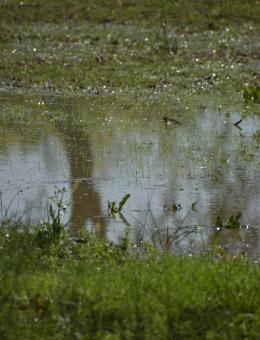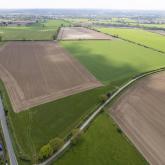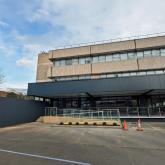
TIME TO VIEW LAND DRAINAGE AS A VITAL INVESTMENT
Published 25 May 2024
As with any business, neglecting long-term investment in favour of short-term savings is rarely a good idea in agriculture, writes James Hill.
This of course applies to machinery, technology and buildings, but above all it should apply to the most valuable commodity on any farm: the soil.
That investment shouldn’t just be on an individual farm basis. If as a country we are to reap the benefit of a vibrant agricultural sector (with all of the food security and land stewardship implications that entails), then that investment sometimes needs to be public, and at national level.
When it comes to soil health, one of the most important investments which has been made through the centuries is in land drainage. Centuries of hard work and forward-thinking have enabled our fundamentally wet land to be productive, from the enormous task of digging ditches, through laborious installation of underground field drains, through to the deep drains invented by John Elkington at the end of the 18th century – all of this has enabled farmers to drain the land and keep the soil productive.
The importance of this has been reflected down the years by public policy. Clay pipes used for field drainage were exempted from tax as early as 1826; government loans backed this up. Then after the First World War when food security was paramount, more proactive government involvement included work on arterial drainage and the formation of public drainage bodies. Similar security fears after the Second World War led to substantial grant aid which lasted until the early 1980s.
But since then: nothing. Perhaps we thought that all the work had been done, and we could live off the benefits in perpetuity. But any farmer will tell you that investing in the future of your soil is – or certainly should be – an ongoing priority.
With climate change bringing more frequent extreme weather events, our ageing drainage infrastructure is being shown up as inadequate; all of us have seen flooded fields this year. The difference between a field with good drainage and one without becomes immediately obvious, with the implications not just for this year’s crops, but with reduced nutrient retention, the future too.
The current focus on short-term financial support, rather than investment for the long-term, is building up a problem for the future, both for the prosperity of agriculture, but also the nation’s food security and the countryside itself.
Drainage needs to be a higher priority issue, with government help through grants, capital allowances or other tax reliefs, just as more enlightened administrations down the centuries have demonstrated. It is as true today as it was in the Middle Ages – you can’t farm without soil.
Share this story
Arnolds Keys Blog

45 HECTARE (112 ACRE) BLOCK OF HIGH QUALITY ARABLE LAND OFFERED FOR SALE NEAR HOVETON
20 May 2024
A 45.38 Hectare (112.13 acre) ring-fenced block of high quality arable land, complete with the benefit of an abstraction licence for irrigation, is being offered for sale just north of Hoveton. Read more >

SPECTACULAR NEW GRADE A OFFICES IN NORWICH LAUNCHED ONTO THE MARKET
17 May 2024
A spectacular newly-created double-height office space housed in the former print hall of the Eastern Daily Press in Prospect House in Norwich has been launched onto the market to let,... Read more >

VALUING INCREASINGLY DIVERSE PROPERTY PORTFOLIOS REQUIRES RELEVANT KNOWLEDGE AND EXPERIENCE
15 May 2024
Portfolio valuations are an important part of managing any commercial property investment, but with investors turning to increasingly diverse types of property, obtaining appropriate advice is key to maximising returns... Read more >

TOP TIPS FOR LANDLORDS TO ATTRACT THE BEST TENANTS
10 May 2024
The last year or two have very much been a seller’s market in the residential lettings market, with as many as 20 applicants for every vacant home offered, writes Lara Whattam. Read more >
